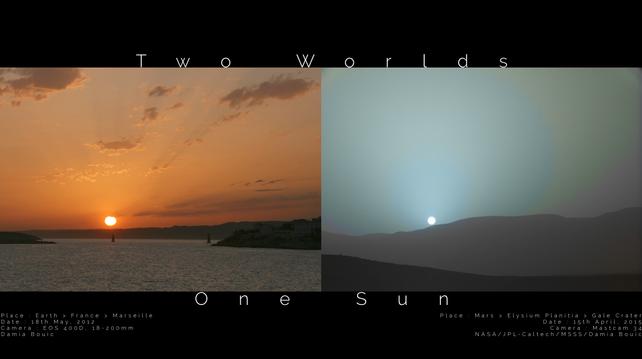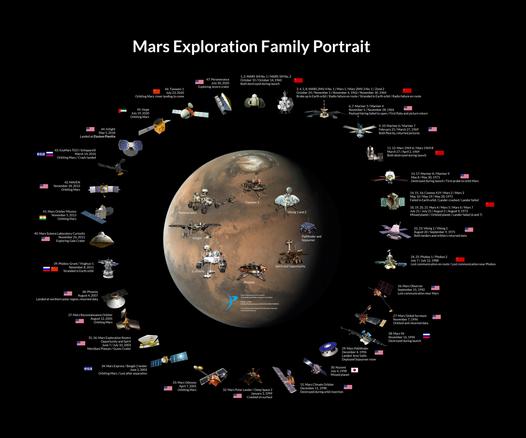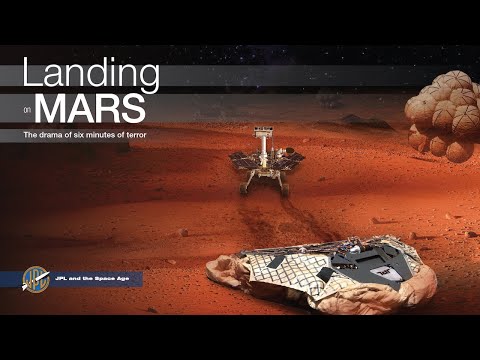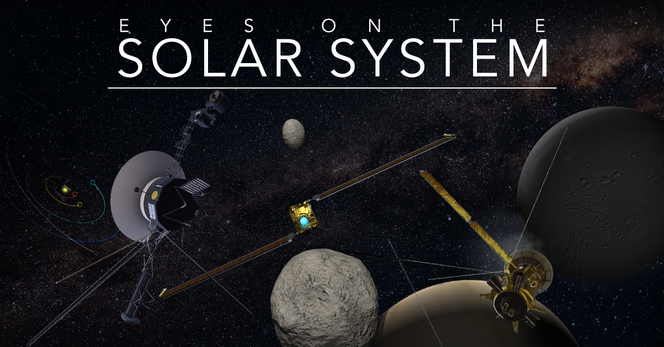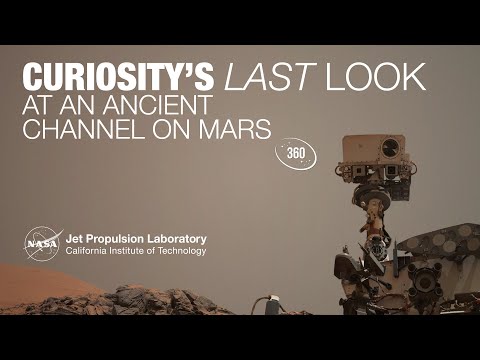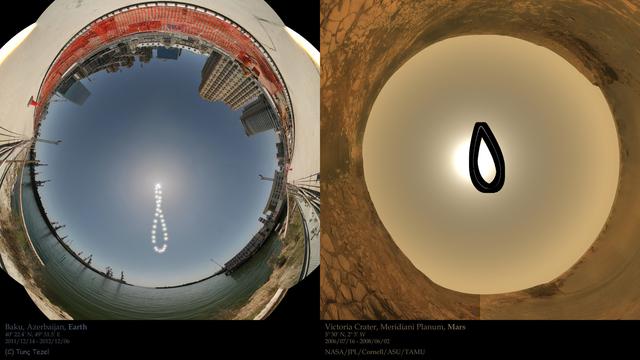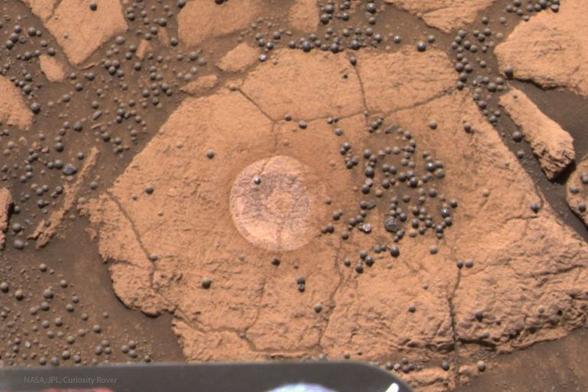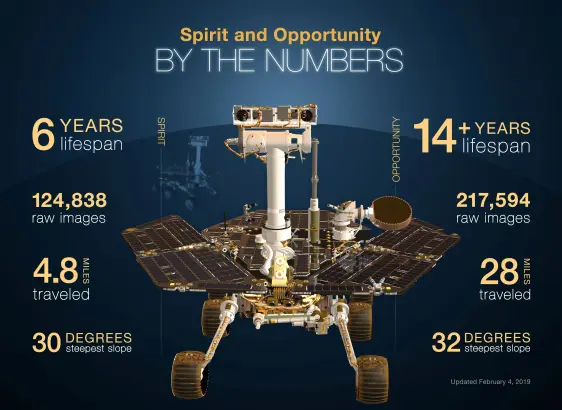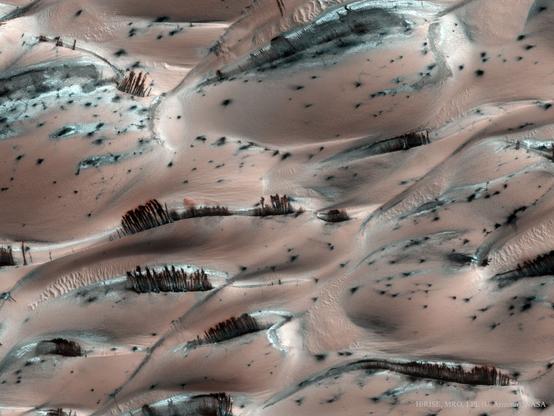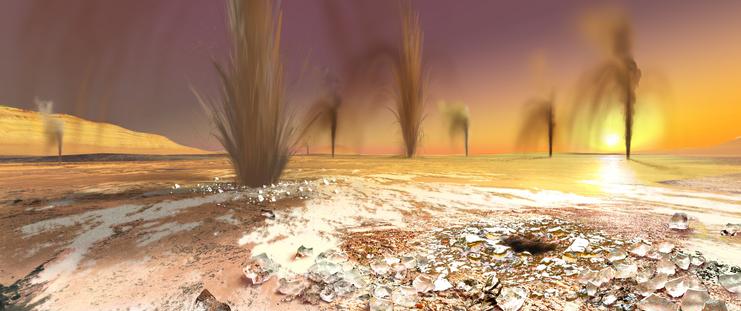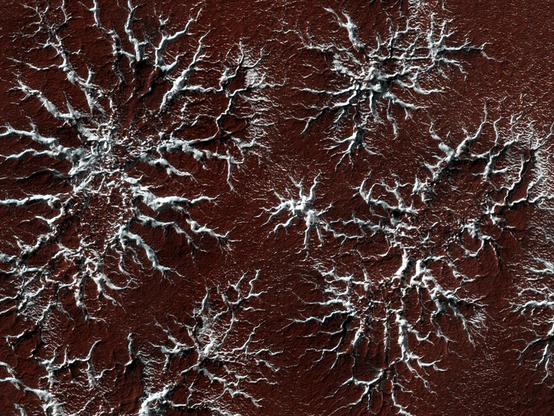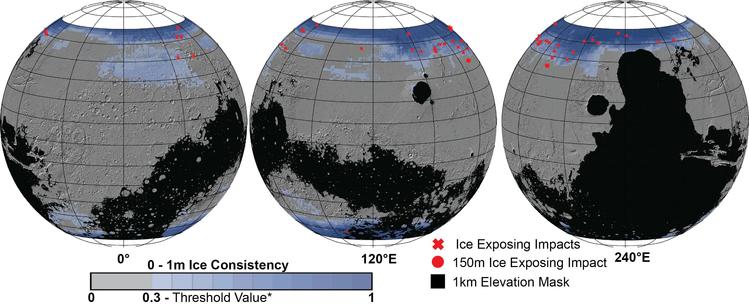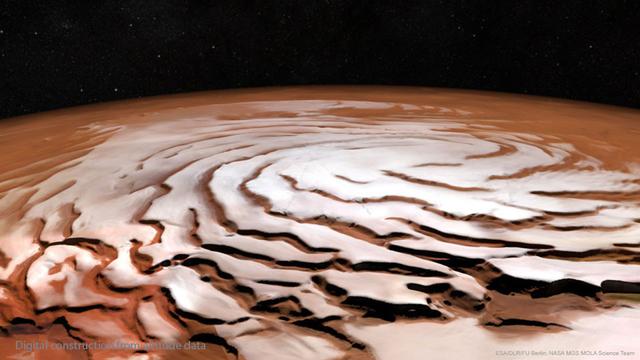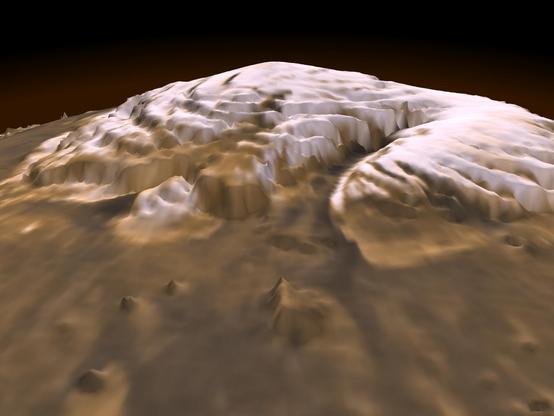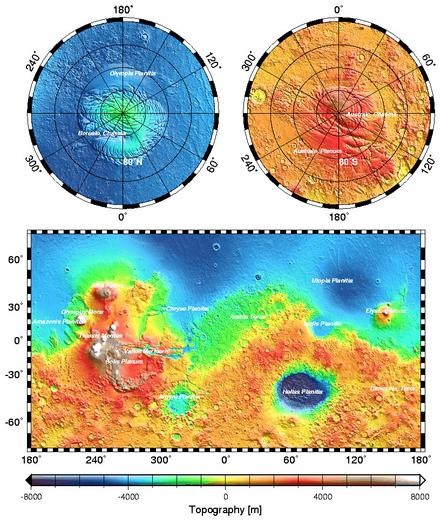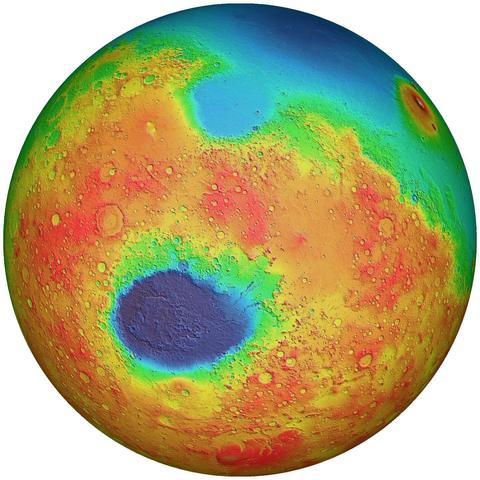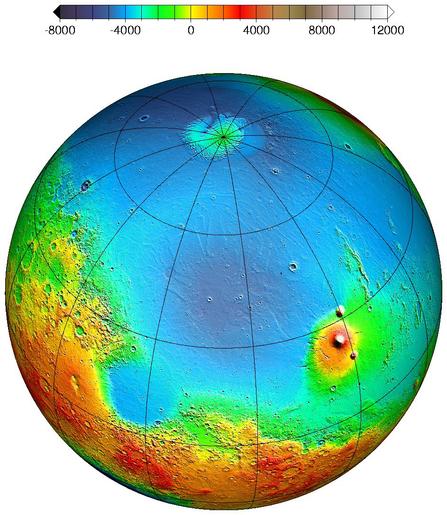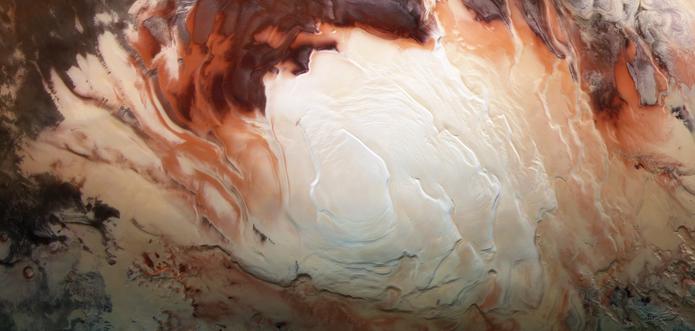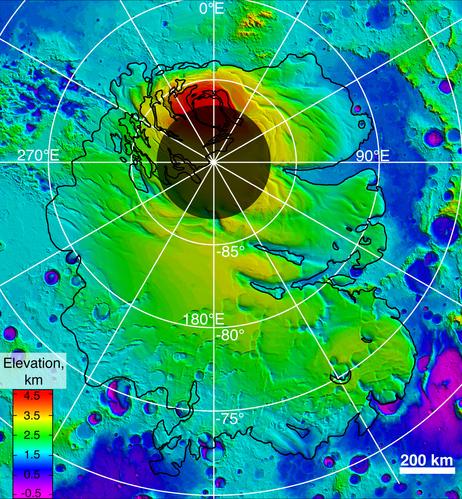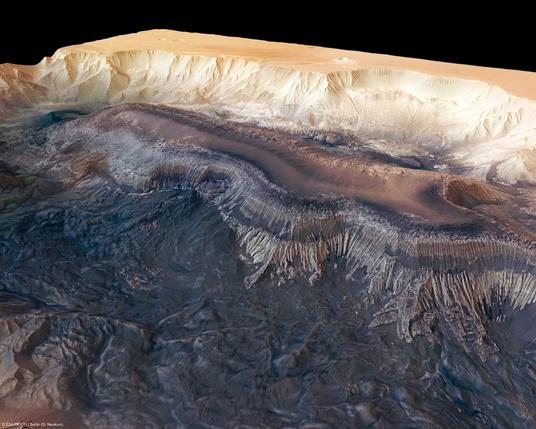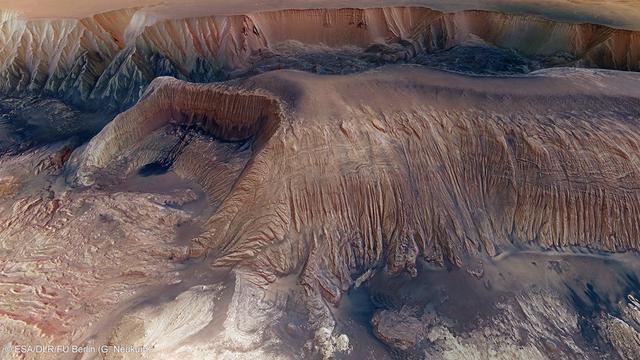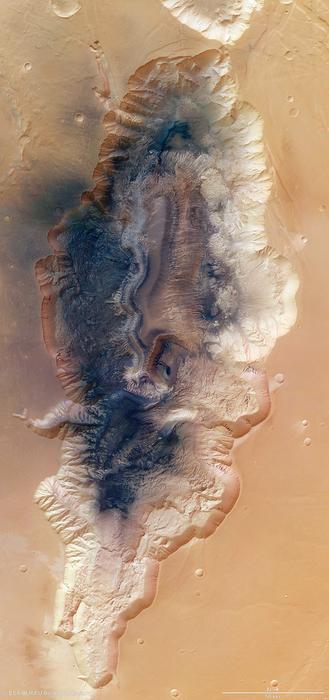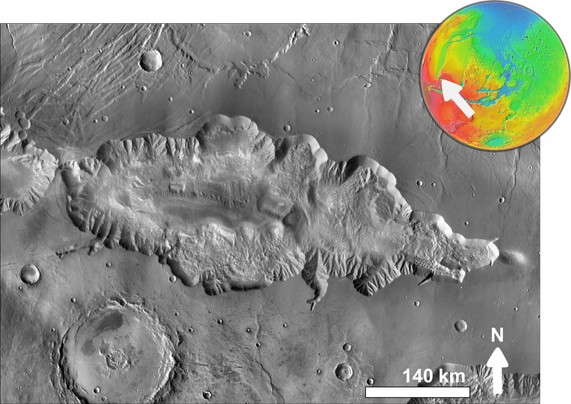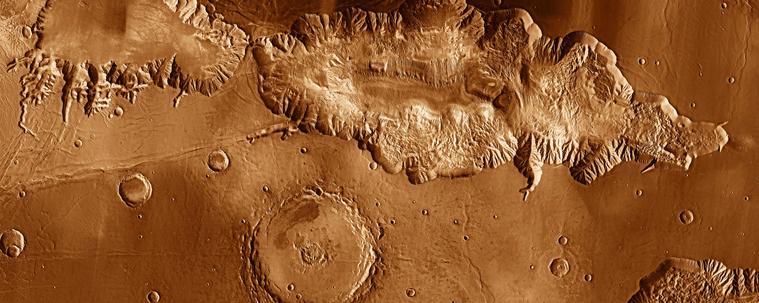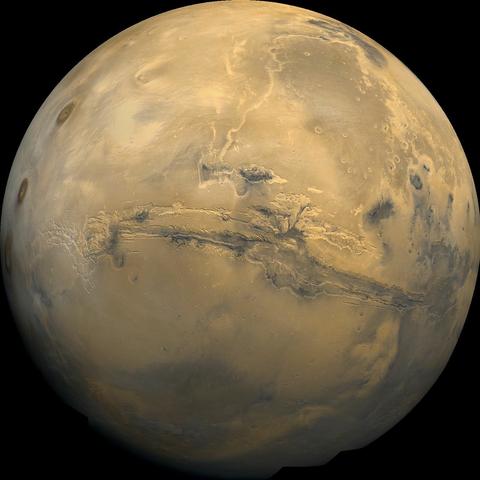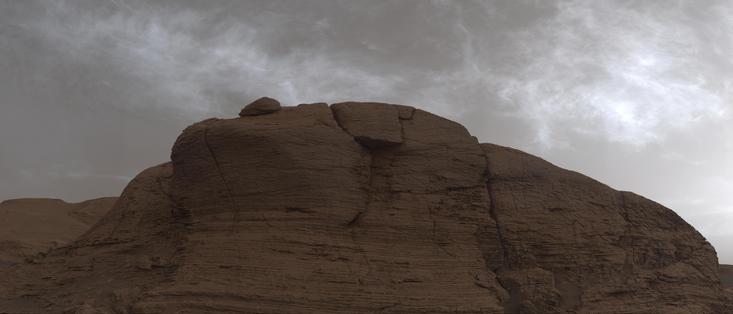TOPIC>
Mars
2025 June 15
Two images are shown side by side. On the left is a sunset seen from Earth, while on the right is a sunset seen from Mars. The Earth sunset is quite orange, while the Mars sunset is quite blue. The Sun appears angularly smaller from Mars than from the Earth.
Two Worlds, One Sun
* Left Image Credit & Copyright: Damia Bouic
https://www.planetary.org/profiles/damia-bouic
* Right Image Credit: NASA, JPL-Caltech, MSSS
https://www.msss.com/
* Digital processing: Damia Bouic
Explanation:
How different does sunset appear from Mars than from Earth? For comparison, two images of our common star were taken at sunset, one from Earth and one from Mars. These images were scaled to have the same angular width and are featured here side-by-side. A quick inspection will reveal that the Sun appears slightly smaller from Mars than from Earth. This makes sense since Mars is 50% further from the Sun than Earth. More striking, perhaps, is that the Martian sunset is noticeably bluer near the Sun than the typically orange colors near the setting Sun from Earth. The reason for the blue hues from Mars is not fully understood, but thought to be related to forward scattering properties of Martian dust. The terrestrial sunset was taken in 2012 March from Marseille, France, while the Martian sunset was captured in 2015 by NASA's robotic Curiosity rover from Gale crater on Mars.
https://www.db-prods.net/blog/2015/05/06/coucher-de-soleil-sur-mars/
https://www.planetary.org/articles/0506-sunset-on-mars
https://apod.nasa.gov/apod/ap140302.html
https://science.nasa.gov/mars/facts/
https://en.wikipedia.org/wiki/Mars
https://en.wikipedia.org/wiki/Gale_%28crater%29
https://en.wikipedia.org/wiki/Martian_regolith#Atmospheric_dust
https://science.nasa.gov/mission/msl-curiosity/
https://www.physicsclassroom.com/class/light/Lesson-2/Blue-Skies-and-Red-Sunsets
https://en.wikipedia.org/wiki/Astronomy_on_Mars#The_color_of_the_sky
https://www.youtube.com/watch?v=IXSIZcj8WgA
https://www.msss.com/
https://science.nasa.gov/sun/
https://hudsonvalleygeologist.blogspot.com/2012/04/size-of-sun.html
https://hudsonvalleygeologist.blogspot.com/2012/04/size-of-sun.html
https://apod.nasa.gov/apod/ap220206.html
https://science.nasa.gov/earth/
https://apod.nasa.gov/apod/ap980526.html
https://apod.nasa.gov/apod/ap250615.html
#space #mars #sun #earth #astrophotography #photography #science #astronomy #nature #NASA #physics
